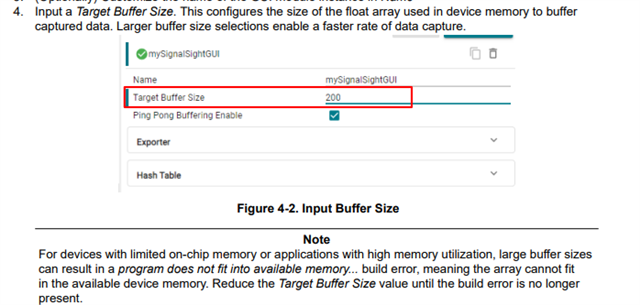Other Parts Discussed in Thread: SYSCONFIG
Tool/software:
Hi all,
I am trying to use the MCU Signal Sight plugin on my launchxl-f28379d. I am able to get it running with data being captured every 1 ms (using a Timer interrupt and SCIA). I have the following doubts:
- If I wish to capture data every 10 us, then the required Baud rate becomes high - almost 4 Mbps. I can achieve this by increasing LSPCLK. But, is this supported in SCI? If not, then what other alternatives are available?
- Can Signal Sight be used simultaneously to capture data in both CPU1 and 2? If yes, then can the same SCIA be used to capture data in both CPU1 and CPU2?
Thank you


